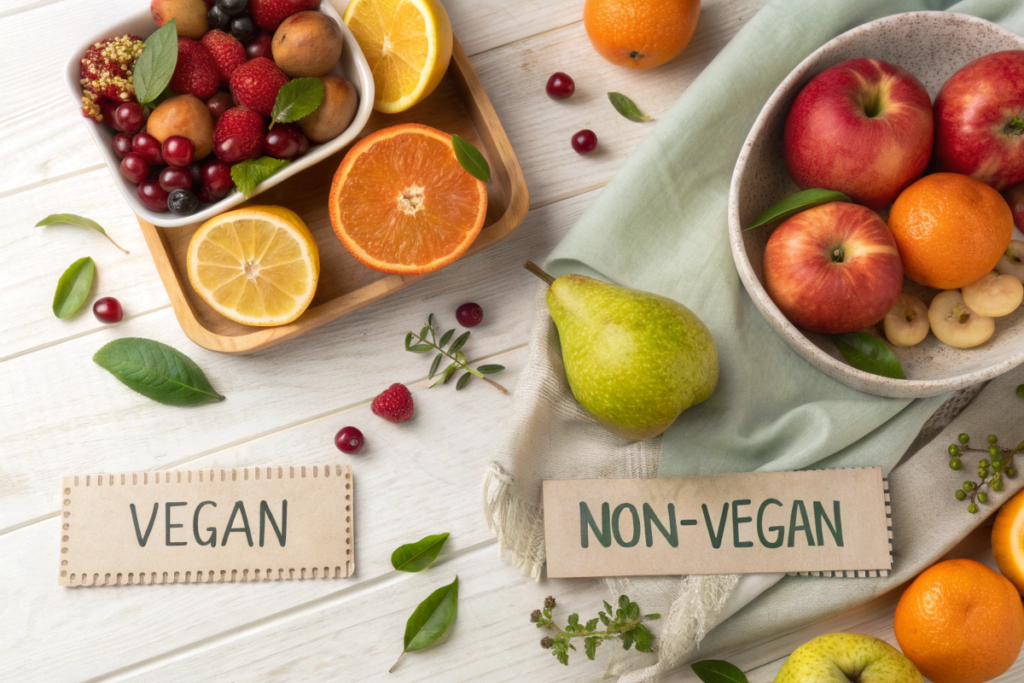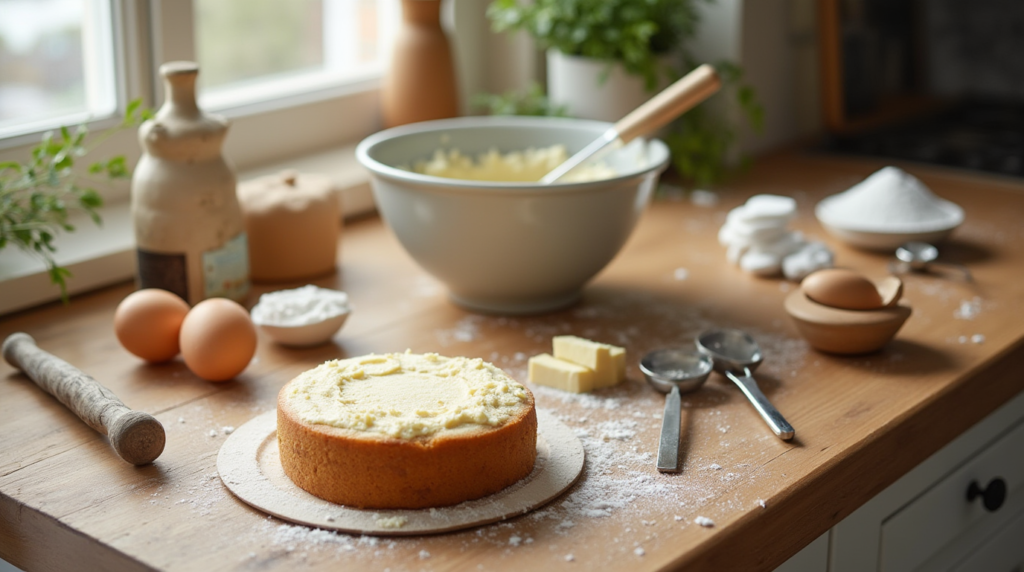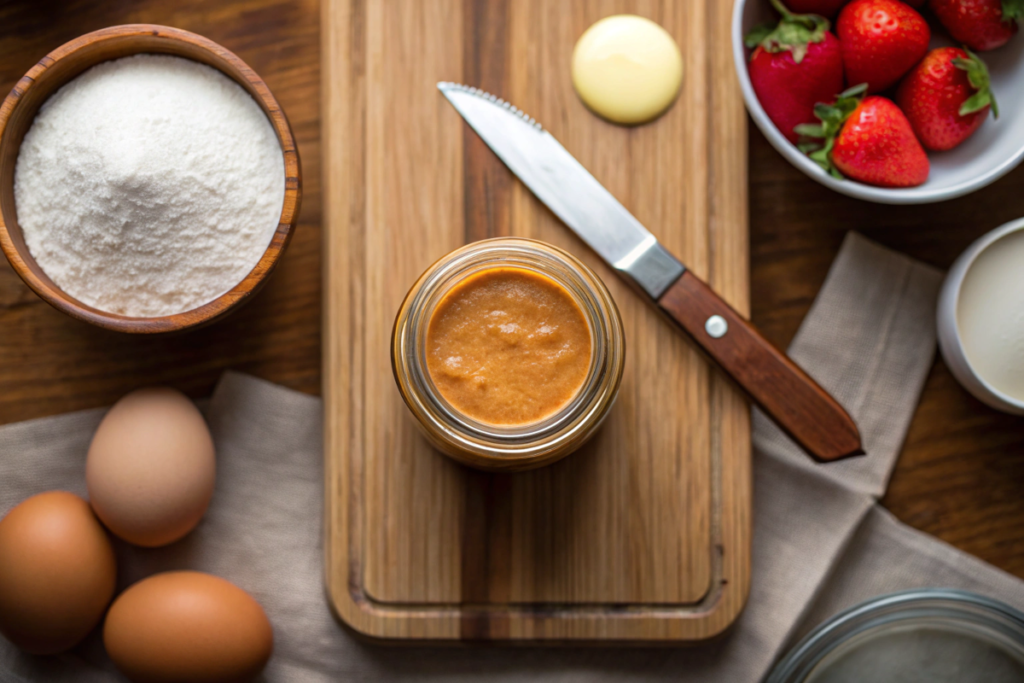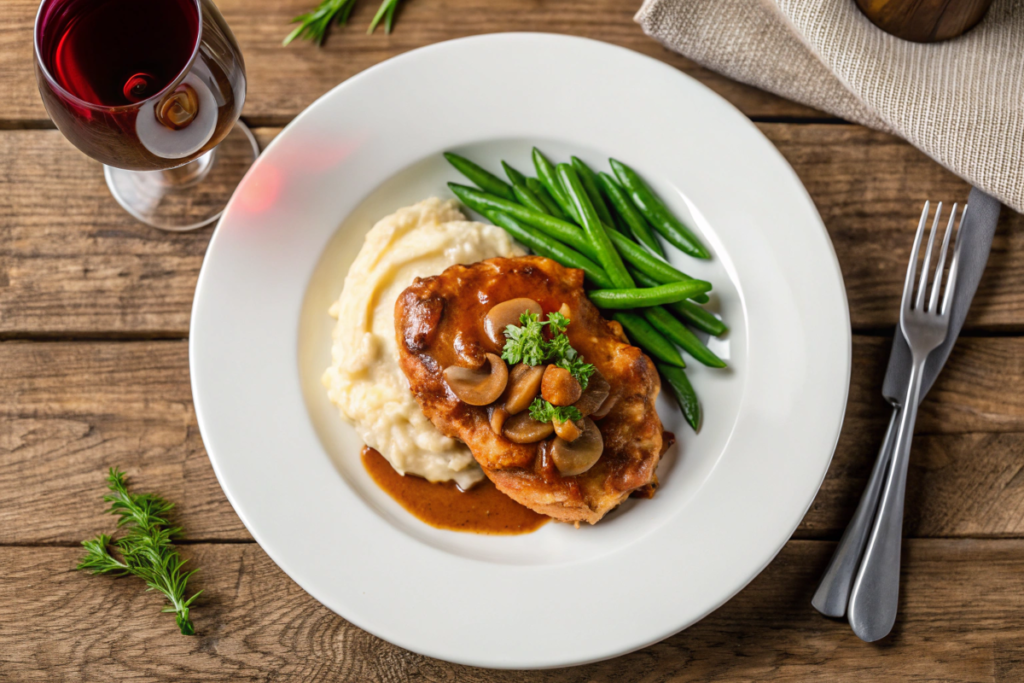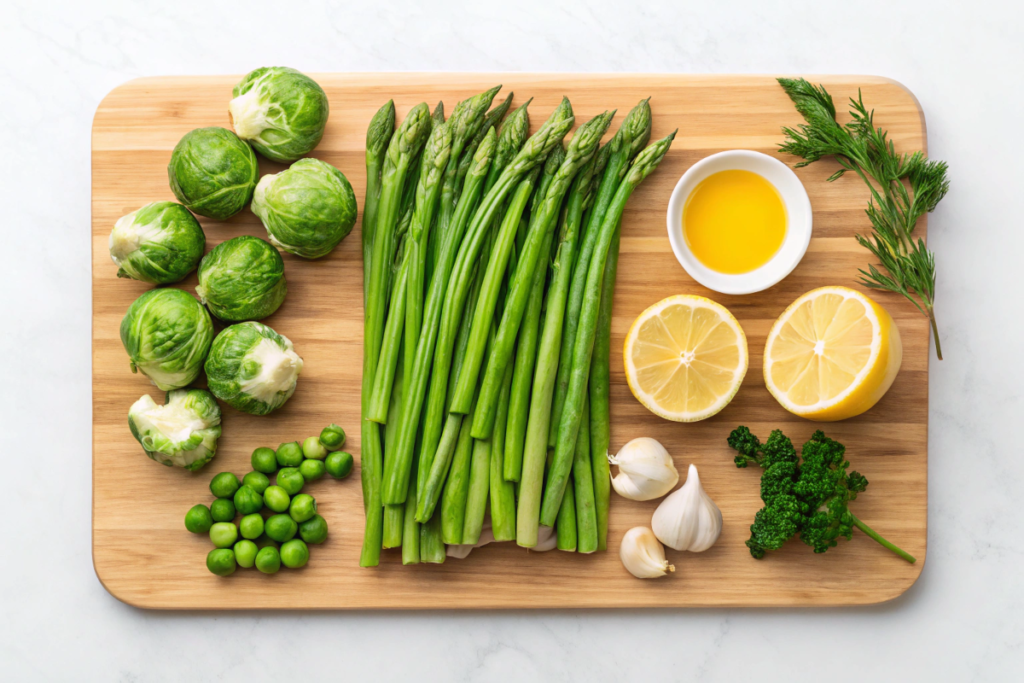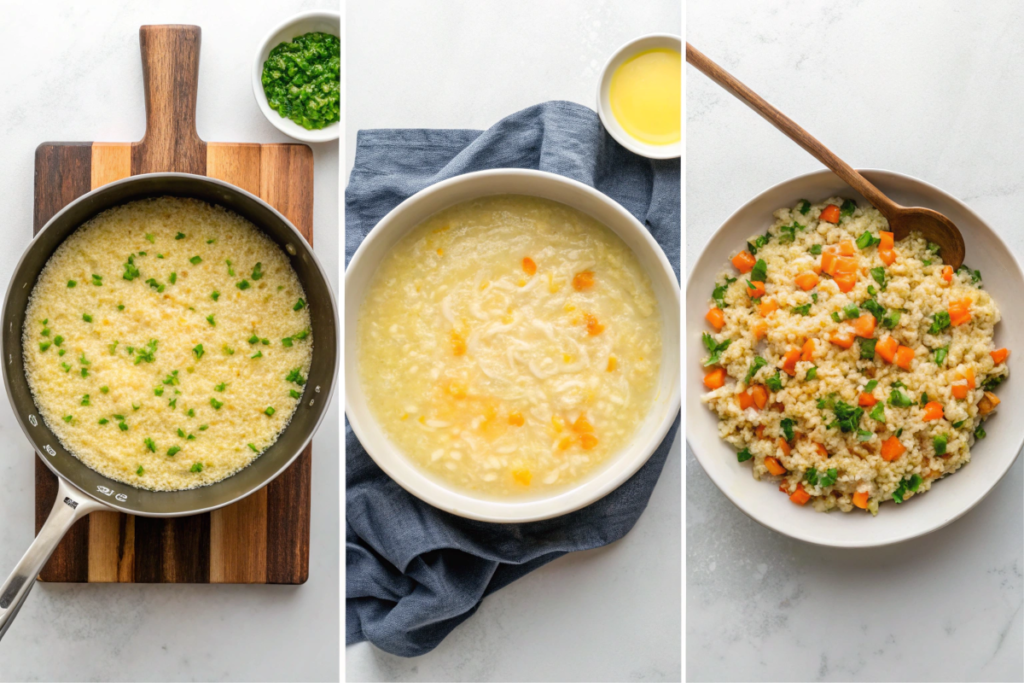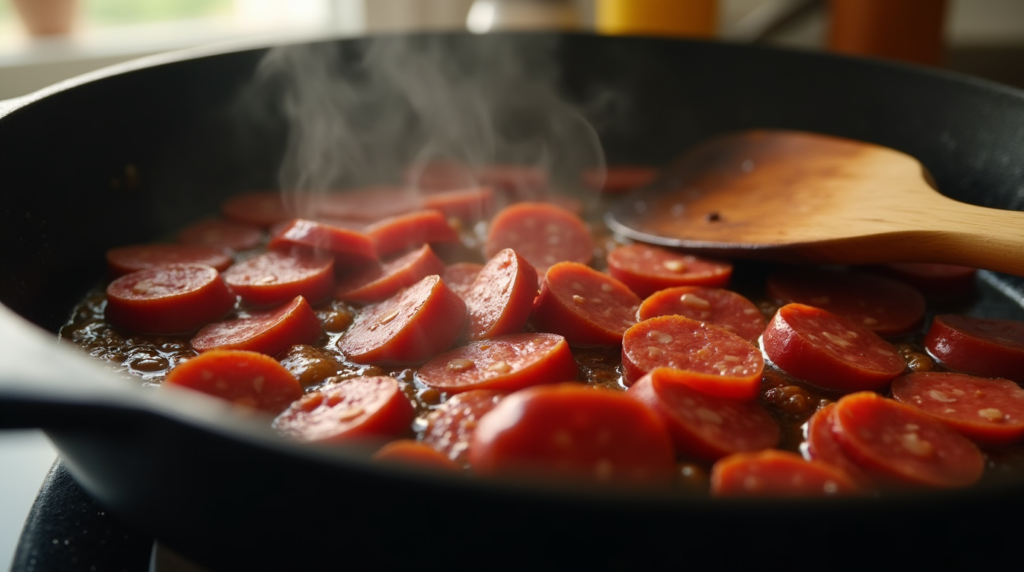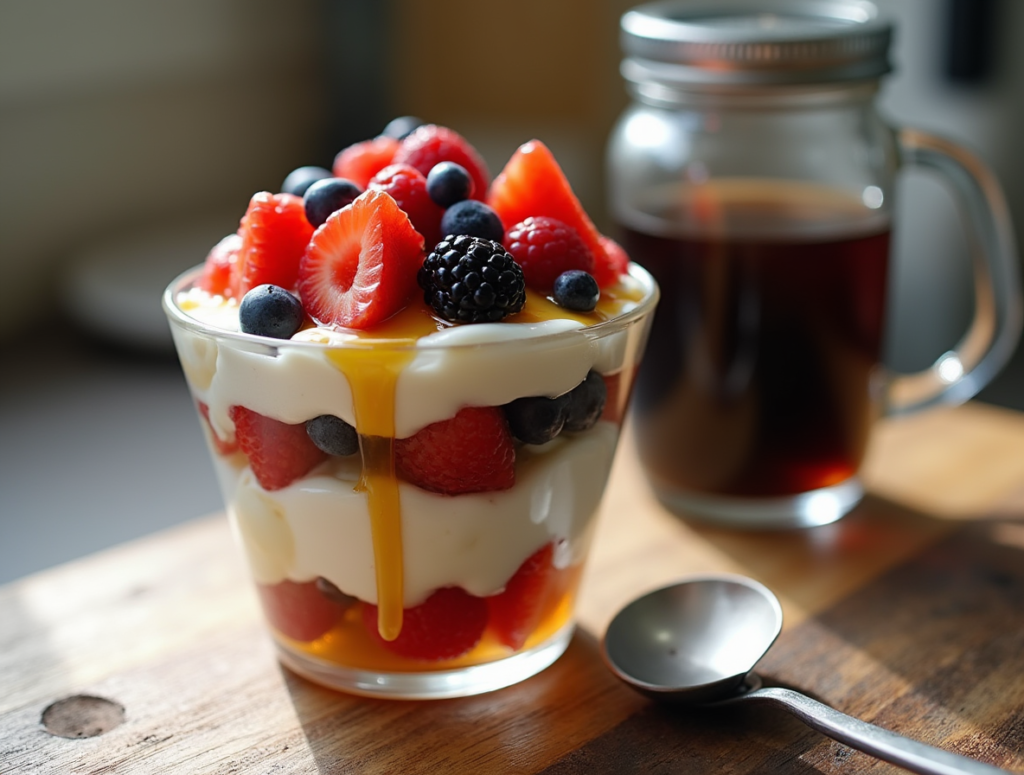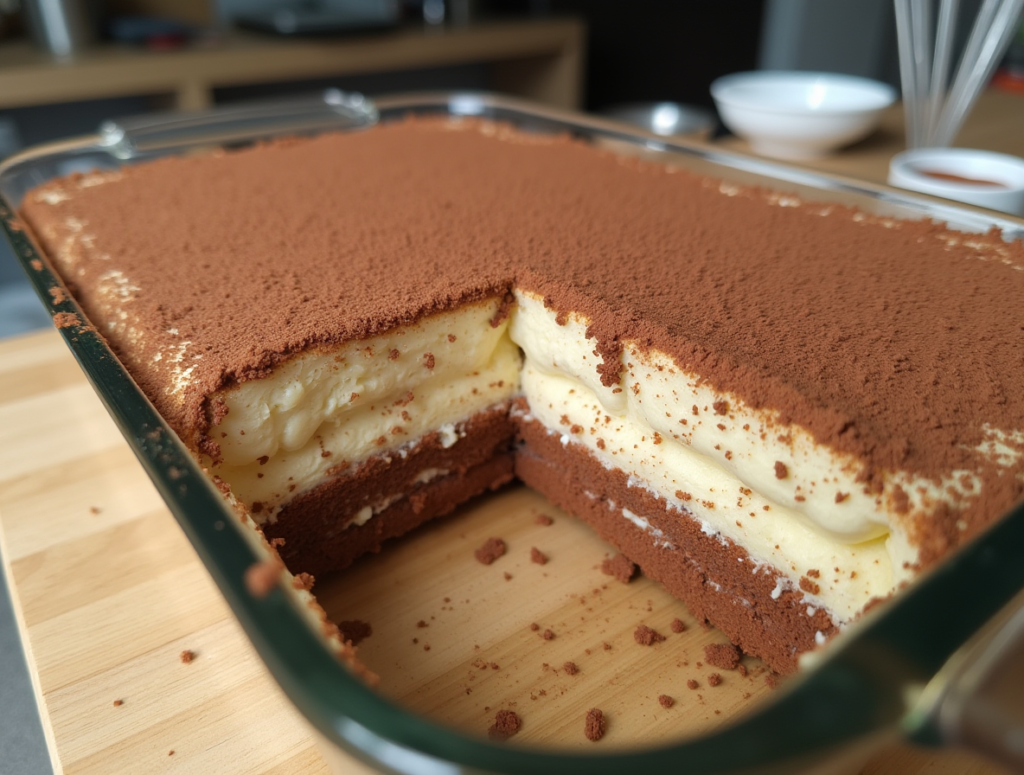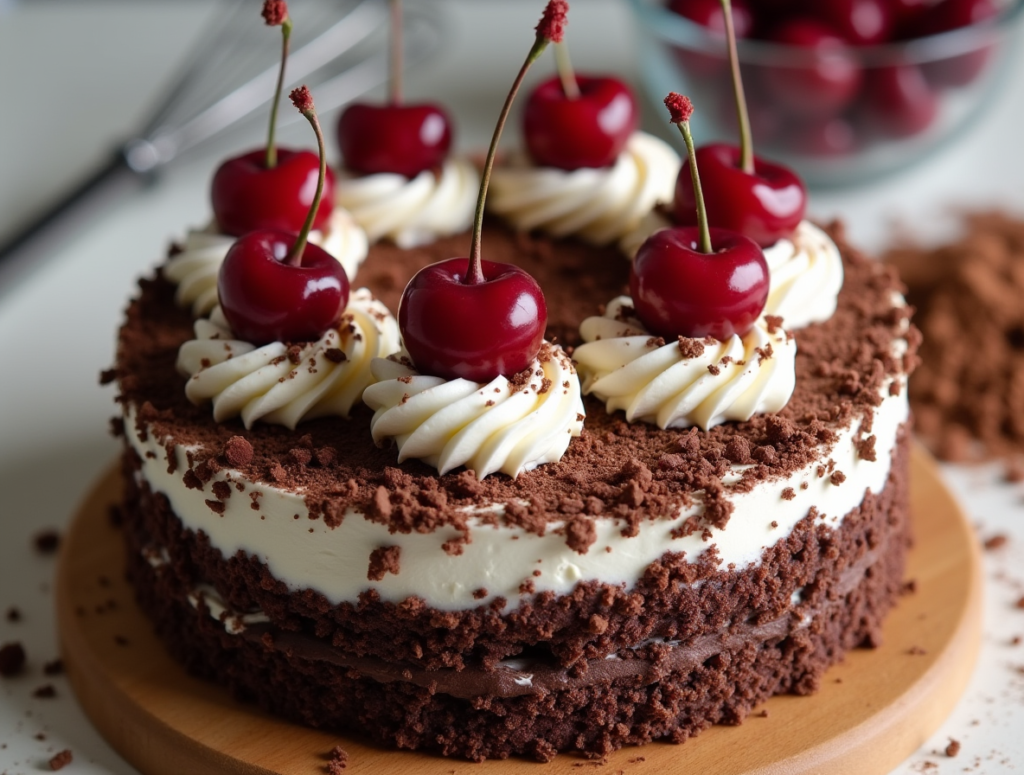Veganism goes beyond a diet. It emphasizes avoiding animal products and promotes ethical, sustainable living. If you’re curious about other vegan-friendly foods, explore this guide on pretzels. Although fruits are plant-based and usually vegan-friendly, certain ones do not fully match vegan principles due to specific processing methods or coatings.
Therefore, this guide explores which fruits vegans cannot eat, examines non-vegan practices in fruit production, and provides tips for choosing ethical, vegan-friendly fruit options.
What Does It Mean for a Food to Be Vegan?
Understanding the Principles of Veganism
Veganism seeks to remove animal products from every diet and lifestyle. For a food item to be vegan, it must exclude ingredients like meat, dairy, eggs, honey, and certain additives. Likewise, the production process should avoid any animal exploitation or cruelty.
Therefore, understanding these guidelines helps vegans make informed choices about fruits. As a result, they can select options that fit both ethical and dietary values.
Why Are Some Fruits Not Vegan?
Explanation of Non-Vegan Practices in Fruit Production
Although fruits themselves are vegan, some practices involved in their production can compromise their vegan status. These non-vegan practices include:
- Wax Coatings: Many fruits receive wax coatings to preserve freshness and enhance appearance. Traditional waxes like beeswax come from bees, making them non-vegan.
- Pesticides and Insecticides: Some pesticides and insecticides used in fruit farming may contain animal-derived products or harm pollinators like bees, conflicting with vegan ethics.
- Processing Aids: In the processing of dried fruits or fruit snacks, animal-based additives such as gelatin or certain colorings might be used.
- Packaging Materials: Some packaging materials contain animal-derived products, such as certain glues or dyes, which are not vegan-friendly.
Understanding these practices helps vegans make informed choices and seek out fruits produced through vegan-friendly methods.
Fruits with Non-Vegan Coatings
List of Fruits Coated with Non-Vegan Substances Like Beeswax
Several popular fruits often come with non-vegan coatings that vegans might prefer to avoid. These include:
- Apples: Many apples sold in stores receive beeswax coatings to extend shelf life and improve shine.
- Citrus Fruits: Oranges, lemons, and limes frequently receive beeswax coatings for preservation.
- Pears: Similar to apples, pears are commonly treated with beeswax to maintain freshness.
- Plums and Peaches: These fruits often have wax coatings to prevent moisture loss and bruising.
- Kiwis: Kiwis may also be coated with beeswax or other animal-derived waxes to enhance their appearance.
These coatings can be challenging to remove completely and may contain animal-based ingredients, making these fruits less suitable for strict vegans.
Is Wax-Coated Fruit Vegan?
Understanding How Wax Coatings May Contain Animal Derivatives
Wax coatings on fruits primarily serve to preserve freshness, prevent spoilage, and enhance visual appeal. However, not all waxes are vegan. Common non-vegan waxes include:
- Beeswax: Derived from bees, beeswax is the most common non-vegan wax used in fruit coatings.
- Shellac: Although often plant-derived, shellac is sometimes processed using animal-based methods, raising concerns for vegans.
In contrast, there are vegan-friendly alternatives:
- Carnauba Wax: A plant-based wax derived from the leaves of the Brazilian palm tree, carnauba wax is a suitable vegan alternative.
- Plant-Based Waxes: Emerging plant-based waxes offer options for those seeking to avoid animal products entirely.
When selecting fruits, vegans should check labels or inquire about the type of wax used to ensure the fruit aligns with their dietary choices.
Non-Vegan Processing Methods
Processes Like Shellac Coatings and What They Mean for Vegans
Non-vegan processing methods can inadvertently introduce animal-derived products into otherwise vegan-friendly fruits. Key non-vegan processing methods include:
- Shellac Coatings: Shellac is a resin secreted by the female lac bug and used as a glaze for fruits and other products. Its insect origin makes it unsuitable for vegans.
- Gelatin-Based Additives: Used in some dried fruits and fruit snacks for texture, gelatin derives from animal collagen, rendering these products non-vegan.
- Animal-Based Emulsifiers: Certain processing aids, such as some emulsifiers and stabilizers, derive from animals and can compromise the vegan status of processed fruits.
Vegans should exercise caution when consuming processed fruits and opt for products that clearly state they are free from animal-derived additives.
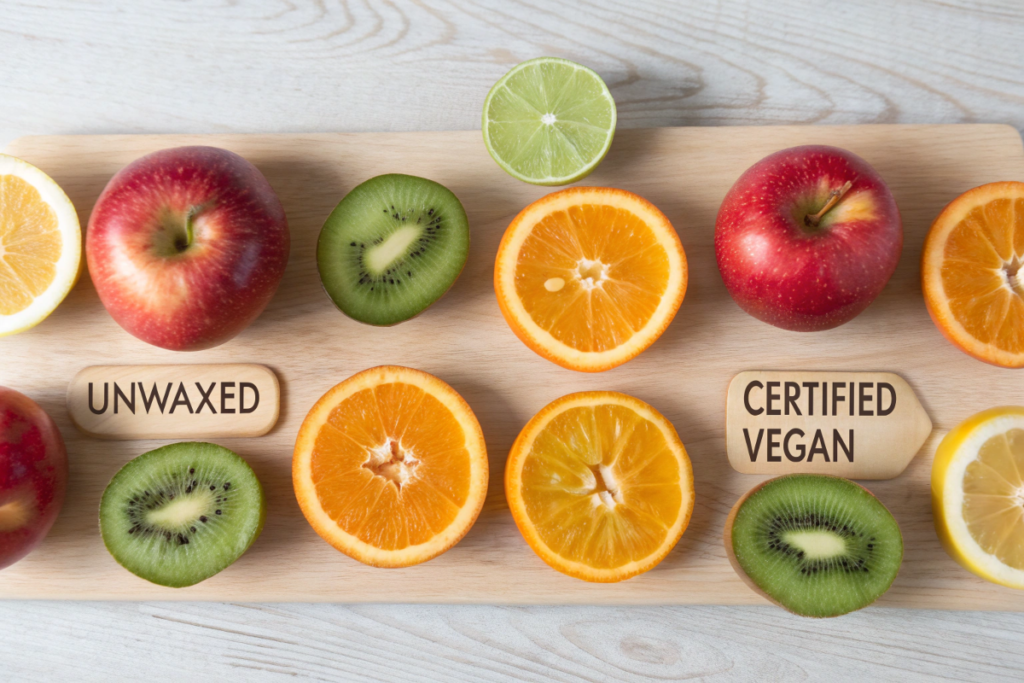
List of Fruits That May Not Be Vegan
Common Examples Such as Apples, Oranges, and Grapes
While the fruits themselves are plant-based, certain varieties may not be entirely vegan due to coatings and processing methods. Common examples include:
- Apples: Often coated with beeswax.
- Oranges: Frequently treated with shellac or beeswax.
- Grapes: May have beeswax coatings or animal-based additives in some processed forms.
- Pears: Commonly coated with non-vegan waxes.
- Plums and Peaches: Sometimes treated with animal-derived waxes or additives.
Vegans should be mindful of these fruits’ potential non-vegan elements and seek out alternatives when necessary.
Vegan Alternatives to Non-Vegan Coated Fruits
Tips for Finding Alternatives Like Organic, Unwaxed Fruits
For those seeking to avoid non-vegan coatings, several alternatives can ensure a fully vegan-friendly fruit experience:
- Organic Fruits: Often sold without wax coatings, organic fruits provide a reliable choice for vegans.
- Unwaxed Fruits: Look for fruits labeled as unwaxed or ask vendors directly about their fruit treatments.
- Local Farmers’ Markets: Purchasing fruits directly from farmers can assure that the fruits are free from non-vegan coatings.
- Home Scrubbing: Thoroughly washing fruits under hot water with a brush can help remove some wax coatings, though it may not eliminate all animal-based waxes.
By choosing these alternatives, vegans can enjoy a wider variety of fruits without compromising their dietary principles.
How to Identify Vegan-Friendly Fruits
Reading Labels, Certifications, and Signs for Vegan-Friendly Produce
Identifying vegan-friendly fruits requires vigilance and knowledge of labeling practices. Here are some tips to help vegans make informed choices:
- Check Labels: Look for labels that specify the fruit is organic, unwaxed, or free from animal-based additives.
- Vegan Certifications: Some fruits may carry vegan certifications or eco-friendly seals indicating their suitability for vegans.
- Ingredient Lists: For processed fruits, carefully read the ingredient list to ensure no animal-derived ingredients are present.
- Retailer Information: Ask store staff or check online resources for information about fruit coatings and processing methods.
- Visual Inspection: Unwaxed fruits generally have a more matte appearance compared to shiny, wax-coated ones.
By utilizing these methods, vegans can confidently select fruits that align with their dietary and ethical standards.
Environmental Impact of Non-Vegan Practices
The Sustainability Aspect of Avoiding Animal-Based Coatings
Choosing vegan-friendly fruits not only aligns with ethical principles but also supports environmental sustainability. Non-vegan practices, such as using animal-derived waxes, can have significant environmental impacts:
- Pollinator Health: Beeswax production can negatively affect bee populations, which are vital pollinators in ecosystems.
- Resource Consumption: Animal-based products often require more resources, such as water and land, compared to plant-based alternatives.
- Waste Production: Non-vegan coatings and additives contribute to increased waste and pollution.
By opting for vegan and sustainably produced fruits, consumers can help reduce their environmental footprint and promote healthier ecosystems.
Ethical Concerns Related to Fruit Production
The Role of Ethical Sourcing and Sustainable Practices
Ethical sourcing in fruit production ensures that the fruits are grown and processed without exploiting animals or harming the environment. Key ethical considerations include:
- Fair Labor Practices: Ensuring that workers involved in fruit production are treated fairly and work in safe conditions.
- Sustainable Farming: Using eco-friendly farming methods that preserve soil health, reduce pesticide use, and promote biodiversity.
- Animal Welfare: Avoiding practices that harm pollinators or involve animal-derived products in fruit processing.
Supporting brands and farms that prioritize ethical sourcing and sustainability can make a positive impact on both the environment and society.
DIY Methods for Cleaning Coated Fruits
Simple Home Solutions for Removing Non-Vegan Coatings from Fruits
Vegans who prefer not to consume non-vegan coated fruits can use DIY methods to remove unwanted waxes and coatings:
- Hot Soapy Water: Soak fruits in a mixture of hot water and dish soap for a few minutes, then scrub with a brush to remove the wax.
- Baking Soda Paste: Create a paste with baking soda and water, apply it to the fruit surface, and scrub gently.
- Vinegar Solution: Mix equal parts of white vinegar and water, soak the fruits, and scrub to dissolve the wax.
- Lemon Juice: Apply lemon juice to the fruit and scrub to help break down the wax coating.
While these methods can reduce the amount of wax on fruits, they may not remove all animal-based coatings. Therefore, choosing naturally unwaxed or organically grown fruits remains the best option for strict vegans.
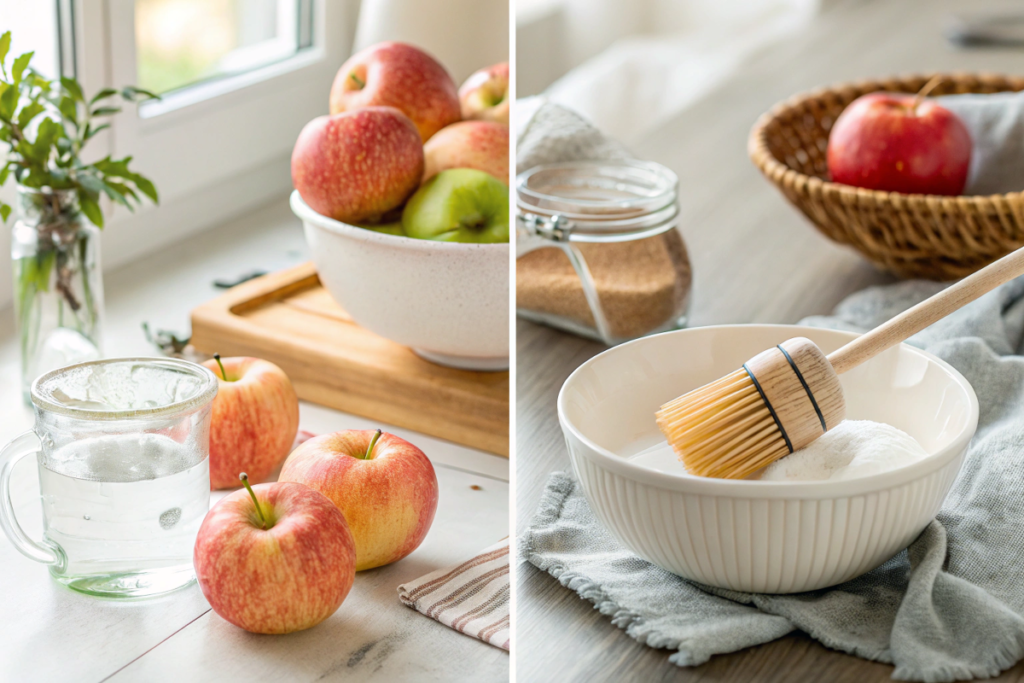
Frequently Asked Questions About Vegan Fruits
Are all organic fruits vegan?
While many organic fruits are free from animal-based coatings, not all are guaranteed to be vegan. It’s essential to check for specific labels indicating no animal-derived additives.
Can vegans consume fruits with natural waxes?
Yes, as long as the waxes are plant-based, such as carnauba wax. However, traditional beeswax coatings are not vegan.
Is dried fruit always vegan?
Not necessarily. Some dried fruits may use gelatin or other animal-based additives in the drying process. Always check the ingredient list.
How can vegans ensure fruits are free from animal-based coatings?
Opt for unwaxed or organic fruits, purchase from reputable sources, and consider shopping at farmers’ markets where you can ask directly about fruit treatments.
Are fruit juices vegan?
Most fruit juices are vegan, but some may contain added animal-based ingredients like honey or dairy-based flavors. Always read the labels to be sure.
Nutritional Value of Vegan Fruits
Highlighting the Benefits of Clean, Plant-Based Fruits
Fruits are a cornerstone of a vegan diet, offering numerous nutritional benefits:
- High in Fiber: Fruits are rich in dietary fiber, aiding digestion and promoting a feeling of fullness.
- Vitamins and Minerals: They provide essential nutrients like vitamin C, potassium, and folate, which are crucial for overall health.
- Low in Calories: Most fruits are naturally low in calories, making them an excellent choice for weight management.
- Antioxidants: Fruits contain antioxidants that help protect the body from free radicals and reduce inflammation.
- Hydration: High water content in fruits contributes to hydration and overall well-being.
Incorporating a variety of vegan-friendly fruits ensures a balanced intake of nutrients, supporting a healthy and active lifestyle.
Common Mistakes and How to Avoid Them
Over-Dipping, Uneven Coating, Improper Storage
When selecting or preparing fruits, avoiding common mistakes ensures the best results. Here are some pitfalls to watch out for:
- Over-Dipping Fruits: Applying too much wax or coating can make fruits slippery and messy. Use coatings sparingly and evenly.
- Uneven Coating: Ensure each fruit receives a uniform coating to maintain consistent flavor and appearance.
- Improper Storage: Storing fruits improperly can lead to spoilage or degradation of quality. Keep fruits in cool, dry places or refrigerate when necessary.
- Ignoring Labels: Not checking ingredient labels can result in consuming non-vegan additives unknowingly. Always read labels carefully.
- Using Low-Quality Fruits: Choose fresh, high-quality fruits to maximize nutritional benefits and taste.
By being mindful of these common mistakes, vegans can enjoy fruits that are both delicious and ethically aligned with their dietary choices.
Conclusion
What fruit can vegans not eat? While fruits are inherently vegan, certain coatings and processing methods can introduce non-vegan elements. By staying informed about these practices and choosing vegan-friendly options, vegans can enjoy a wide variety of fruits without compromising their ethical standards.
Opting for organic, unwaxed, and sustainably sourced fruits ensures that your fruit consumption aligns with vegan principles, promoting both personal health and environmental sustainability.
Embrace the diversity of vegan-friendly fruits and make informed choices to support a compassionate and eco-conscious lifestyle.

